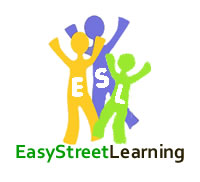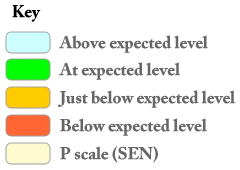

|
Tweet |
|
|||||||||||||||||||||||||||||||||||||||||||||||||||||||||||||||||||||||||||||||||||||||||||||||||||||||||||||||||||||||||||||||||||||||||||||||||||||||||||||||||||||||||||||||||||||||||||||||||||||||||||||||||||||||||||||||||||||||||||||||||||||||||||||||||||||||||||||||||
 | 7 | a | |||||||||
| b | |||||||||||
| c | |||||||||||
| 6 | a | ||||||||||
| b | |||||||||||
| c | |||||||||||
| 5 | a | ||||||||||
| b | |||||||||||
| c | |||||||||||
| 4 | a | ||||||||||
| b | |||||||||||
| c | |||||||||||
| 3 | a | ||||||||||
| b | |||||||||||
| c | |||||||||||
| 2 | a | ||||||||||
| b | |||||||||||
| c | |||||||||||
| 1 | a | ||||||||||
| b | |||||||||||
| c | |||||||||||
| P | |||||||||||
 | 1 | 2 | 3 | 4 | 5 | 6 | 7 | 8 | 9 | ||
| Key Stage 1 | Key Stage 2 | Key Stage 3 | |||||||||
| Primary School | Secondary School | ||||||||||
| SCHOOL YEAR | |||||||||||

Well it's that time of year again - school reports!
Countless parents will be scratching their heads to make sense of
the mysterious combination of numbers and letters shown in their children's reports.
They are your child's 'attainment levels' for each of the main subjects your child has been studying. They enable you to compare your child's skill level against expected national standards. Each level is broken into three sub-levels; 'a', 'b' and 'c', with 'a' indicating a higher skill level than 'b', and 'b' being a higher skill level than 'c'. For example, a '3a' is a higher level of achievement than a '3b' but lower than a '4c'.
Attainment levels are important as they show you (and teachers) where to focus help so your child can improve where they need to.
Sadly, many parents are left confused by attainment levels since they are often given without a clear explanation. Worryingly, a poor understanding of attainment levels will reduce the effectiveness of help parents give their children. That's why we've included this article to help you.
Typically, parents want to know if their children are doing well, or not well - this can be done with our chart shown above.
To use the chart, find where the column for your child's school year and the row for your child's attainment level meet. Use the key for the colour of the rectangle to find out how you child's skill level compares with the expected level for their age.
 How your child was assessed at school
How your child was assessed at school
Throughout the year, your child's teacher has carried out observations and tests in class to measure your child's skill level in what they are taught.
If your child has sat SATs tests then the mark they get will be converted into the 'attainment level' format.
 How to use this information to help your child improve
How to use this information to help your child improve
The most important thing is not to ignore this valuable information.
Finding out your child's weak areas is an important and normal part of learning so areas where they need help get identified. Use this information and take steps to help them improve where they need to. If you feel unsure how to do this, ask your child's teacher.
It's a mistake to do nothing about your child's weak areas, as taking action sooner on will be more effective than doing so later.
 The effect of age on Attainment Levels
The effect of age on Attainment Levels
Your child's ages is a factor that will effect their Attainment Level, however, we have found that the support you give your child is a much stronger factor than your child's age.
If your child has a lower than expected attainment level for their school year, we hope you will step up the help you give your child. This will help your child succeed in their education as the support children receive will overcome any minor age gap.
 Attainment Levels and Special Education Needs
Attainment Levels and Special Education Needs
A different system called 'performance scales' or 'P scales' must used for reporting attainment levels of special educational needs children who are working below level 1 of the National Curriculum.
They are used at the end of Key Stage 1, Key Stage 2 and Key Stage 3 for English, mathematics, science and in other National Curriculum subjects.
 for more information on P scales.
for more information on P scales.
 How your child's Attainment Levels are used
How your child's Attainment Levels are used

Teachers are expected to raise levels of attainment by two sub-levels each year. Most parents realise learning should happen at school and home and will make efforts to work with the school to help their child improve.
Your child's teacher should be able to shed more light on your individual child's attainment, progress and targets.
Attainment levels also enable headteachers, teachers, parents and governments to monitor the standards across all schools.
 Targets for your child & why aiming for 'average' won't work
Targets for your child & why aiming for 'average' won't work
Learning is a bit like taking a journey. Having targets helps give a focus for your efforts and helps you know when you have achieved what you needed to. We think targets are good.
Some parents feel they are being kind to their children by avoiding them the effort required in trying to aim high. For this reason parents can end-up with having 'average' targets for their children. The big flaw with this apporach is that if there is any small problem (like exam nerves) then their child's achievement levels will fall 'below average'.
 Oddities
Oddities
When your child starts secondary school you may be surprised at the low attainment levels they are given in some subjects. This may be because the subject is completely new to them (like a second language) so their learning will be starting from scratch. This won't be like subjects such as maths that they have already spent several years studying.
Seek more advice from your child's school if you feel concerned about any of their attainment levels.
 Suggested next reading
Suggested next reading

|
 Expert Tuition Expert Tuition FREE Tests and Resources FREE Tests and Resources Our Articles Our Articles Contact Us Contact Us |

|
 EasyStreetLearning is a Registered Trademark | Click for Sitemap
Website by Gopal Services Limited © 2012
EasyStreetLearning is a Registered Trademark | Click for Sitemap
Website by Gopal Services Limited © 2012


|
|
|

|
|
|
|
|
|
|
|
|
|
|
|
Expert Tuition
for Numeracy, Literacy, SATs, 11+, School Entrance, CATs & GCSEs. Also Distance Tuition. |
Study Guides & Practice Tests
for SATs, 11+, CATs & School Entrance
- designed to be the best |
|
Our Learning Guides
Maximise the time
you spend helping your child |
Our Charity Partnership
Helping children improve
their future through better learning |
| FREE Tests & Resources |
|
FREE Model Answers: SATs, 11+, GCSE FREE Times Tables Learning Plan |
FREE Offers FREE Articles To Help Your Child Succeed |